


Ngā Whare Pārara
‘Ngā Whare Pārara’ is the latest Superhome development centred around two inspirational themes: Low Carbon and Solar Design, with the street front home to become NEW ZEALAND’S FIRST CARBON ZERO SUPERHOME.
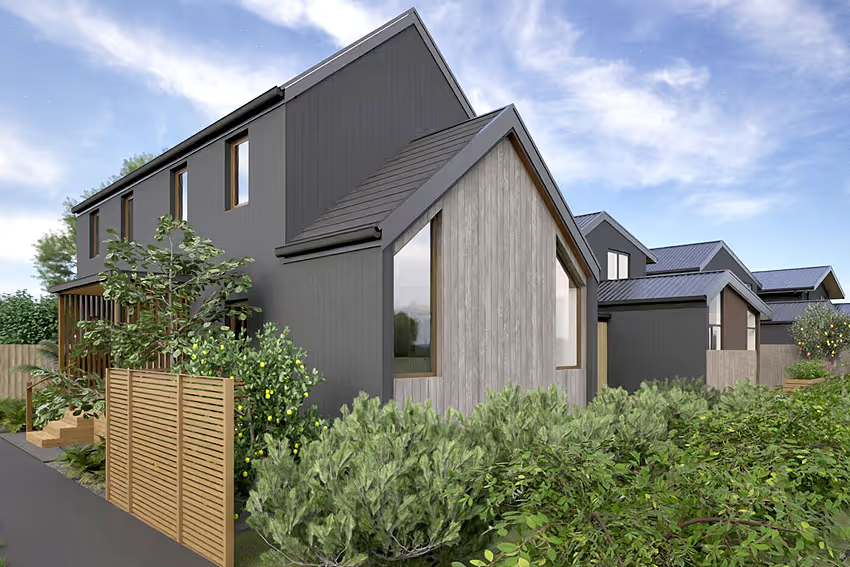
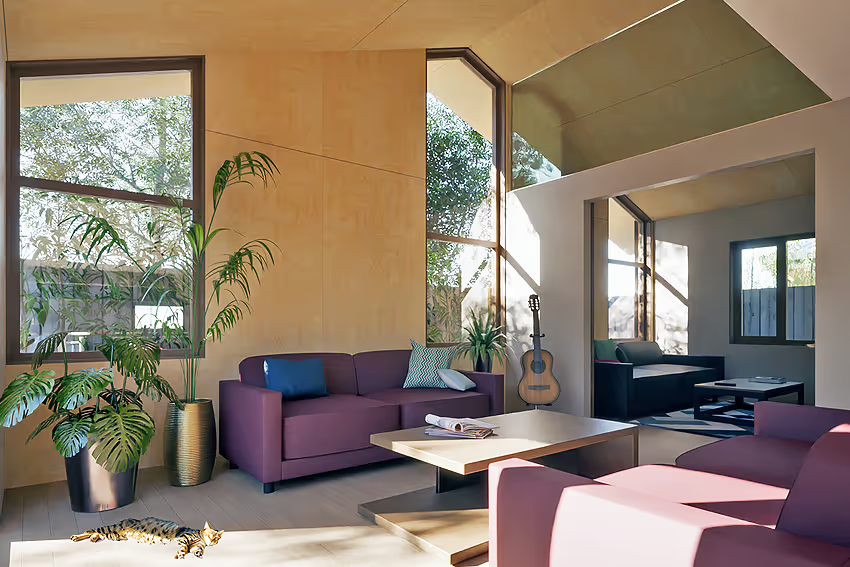
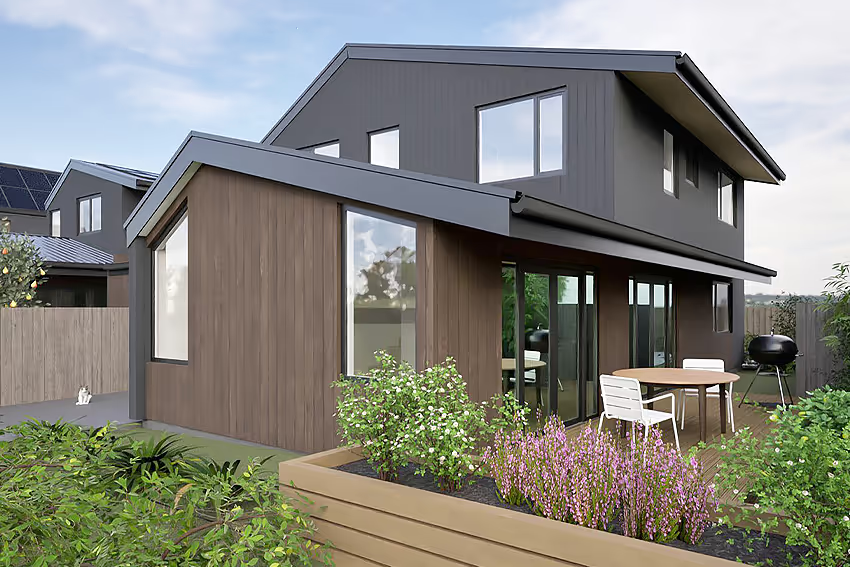

PROJECT UNDER CONSTRUCTION

This project consists of four turn-key Superhomes (two stand-alone, and two semi-detached) on freehold titles.
Pushing the boundaries to inspire and educate the community and industry on how to create climate-positive and energy positive homes.
‘Ngā Whare Pārara’ means to warm oneself or to bask in the sun… reinforcing the first principle of designing for optimal solar aspect, creating four Superhomes bathed in natural light that require minimal energy input. Upon completion, the street front home, ‘Te Whare Tukuwaro-kore’ will be New Zealand’s first Carbon Zero Superhome.
The project champions concepts of ‘manaakitanga’ and ‘kaitiakitanga,’ fostering community, environmental care, and responsible building practices.
RECYCLING THE OLD
The first step in keeping the project green was “recycling” the 1906 villa that was previously onsite. It was sold and has been moved to a “village of villas” in Ashley, North Canterbury.
“It’s great that it’s not getting smashed and sent to landfill, and is having another life.”
Rather than just focusing on efficient operation of the homes once built, we need to consider the materials used: Concrete and steel, in particular, are major contributors to greenhouse gas emissions, so use of those materials was minimised.
“The biggest thing we reduced is the concrete”
House A has a suspended timber floor on piles. The others have low-carbon concrete slabs to keep costs down.
The homes will use a lot of timber (carbon-positive), including cladding and flooring, and structural steel has been replaced by New Zealand-made laminated glulam beams, which offer better earthquake resilience as well as a lower carbon footprint.
The carbon use has been calculated using VQuest software which works in with the architectural practice’s 3D CAD package.
Materials used need to have Environmental Product Declarations - less common in New Zealand-made products.
Another focus is to eliminate waste in the design and build processes; Construction waste is typically a huge contributor to landfill in New Zealand.
Landscaping will include fruit trees, native plants, flowers, herbs and vegetables.
“We take the holistic approach and think about the landscaping and biodiversity, even though it’s not a requirement”
Planning rules would have allowed seven townhouses on the site, but would not have allowed for “the best possible living environment for people”.
They are not designed exclusively for profit. They are designed for people and planet, probably in that order.
We wanted gaps between each of the homes. Ngā Whare Pārara, means to warm oneself or bask in the sun. We wanted sun into all the homes, a good quality of light, rather than row housing.
“These are designed for liveability rather than as a bunch of boxes, ‘how many can we fit on the site?’”
The windows are imported from Poland (KOFFMAN EUROPEAN WINDOWS), as a similarly spec’ed product made in New Zealand was much more expensive. Ocean freight has a surprisingly low carbon footprint.
The EcoPanel walls are made offsite, and have a separate cavity for insulation and services, and an airtight wrap on both sides, which stops condensation and moisture.
One of the homes is under offer, and one will be kept as a show home to educate others - both the public and professionals - as to how this way of building works.
“We can’t design and build all the homes that are needed ourselves, so we give the knowledge away.”
“People can imagine an energy efficient sustainable home, but actually experiencing it is different. If you actually visit the home, you can feel how warm it is, experience the air quality, see the layout”
“People who are chasing high performance homes are often focused on the technical engineering side of it rather than the design, [but] there’s no reason you can’t have both.”
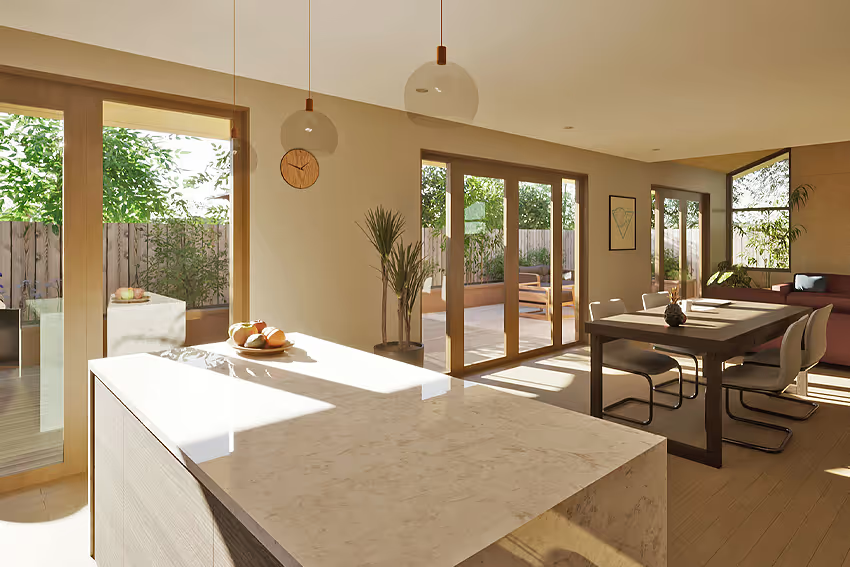
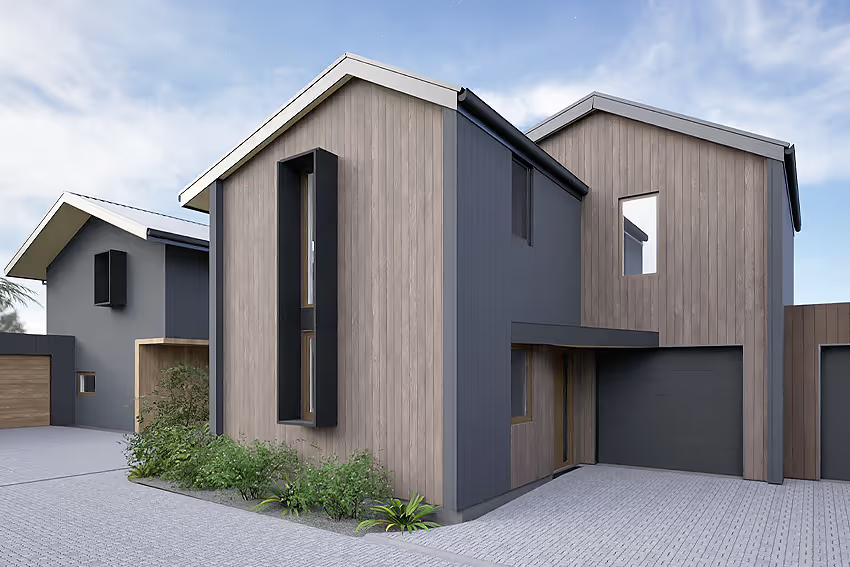
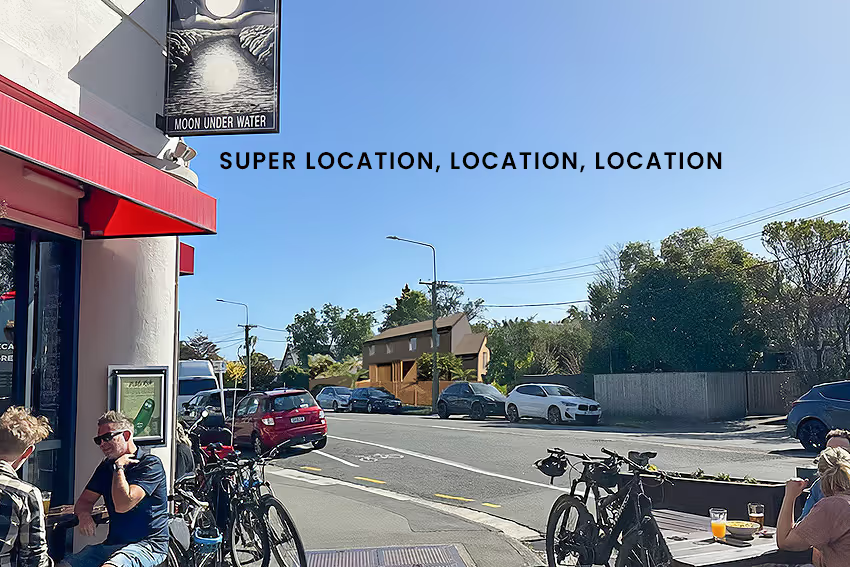
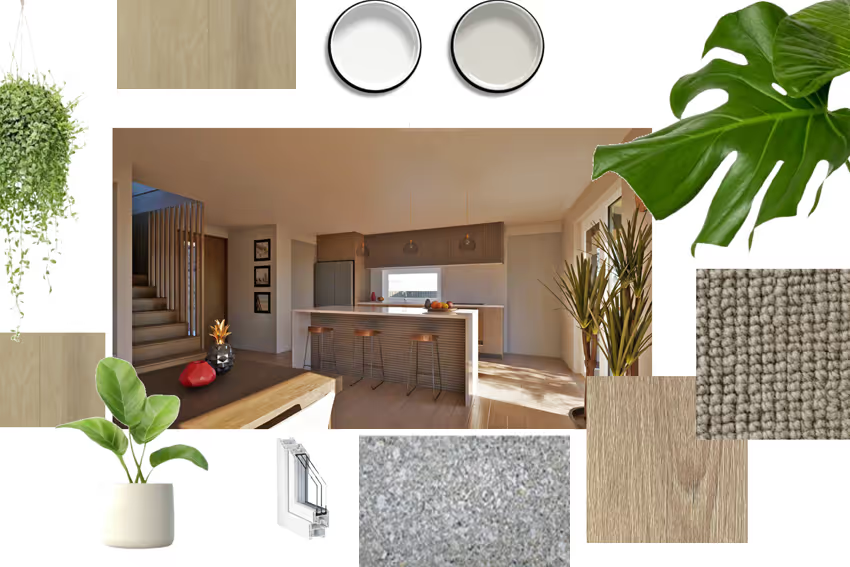
SUPERHOME FEATURES
Triple-glazed European windows
Whole home Heat Recovery Ventilation
EcoPanel - thermal bridge-free air sealed walls
Heat pump hot water systems
Automated shading to control indoor temperature
900mm eaves where needed to control solar gain
Solar panels (without a battery)
Wiring for EV charger
Rainwater collection
Layout optimised for natural light
Ngā Whare Pārara | PLANS
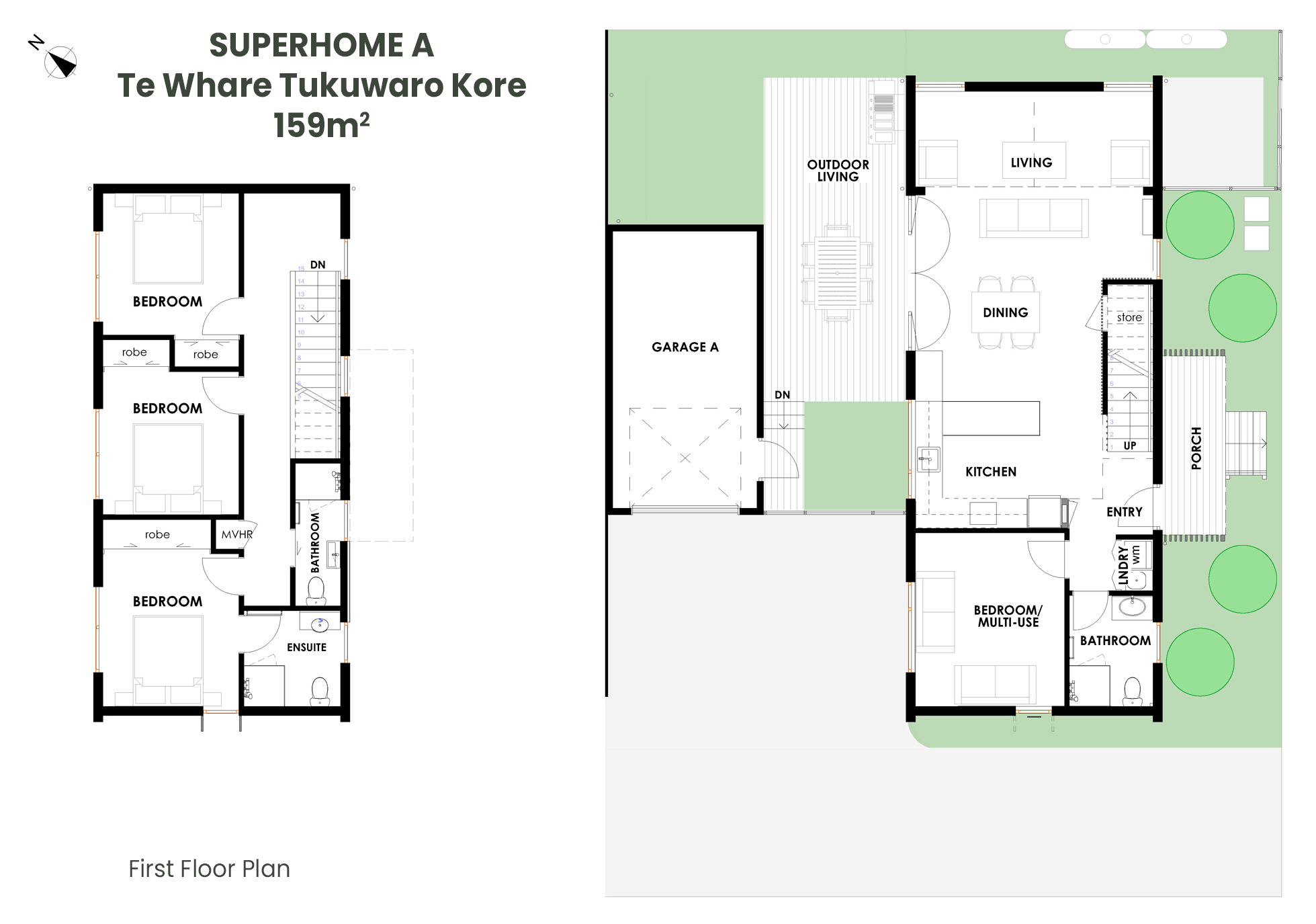
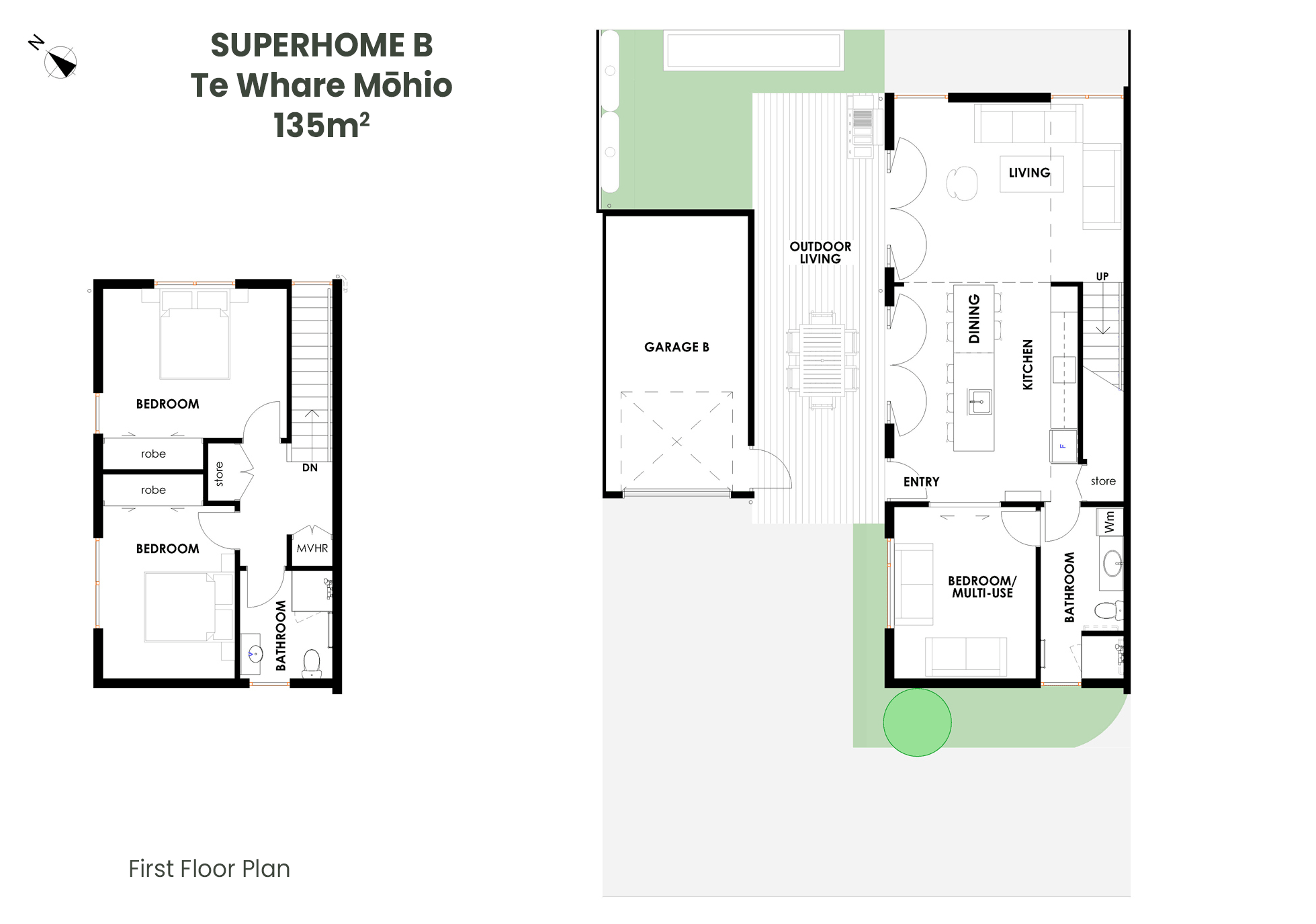
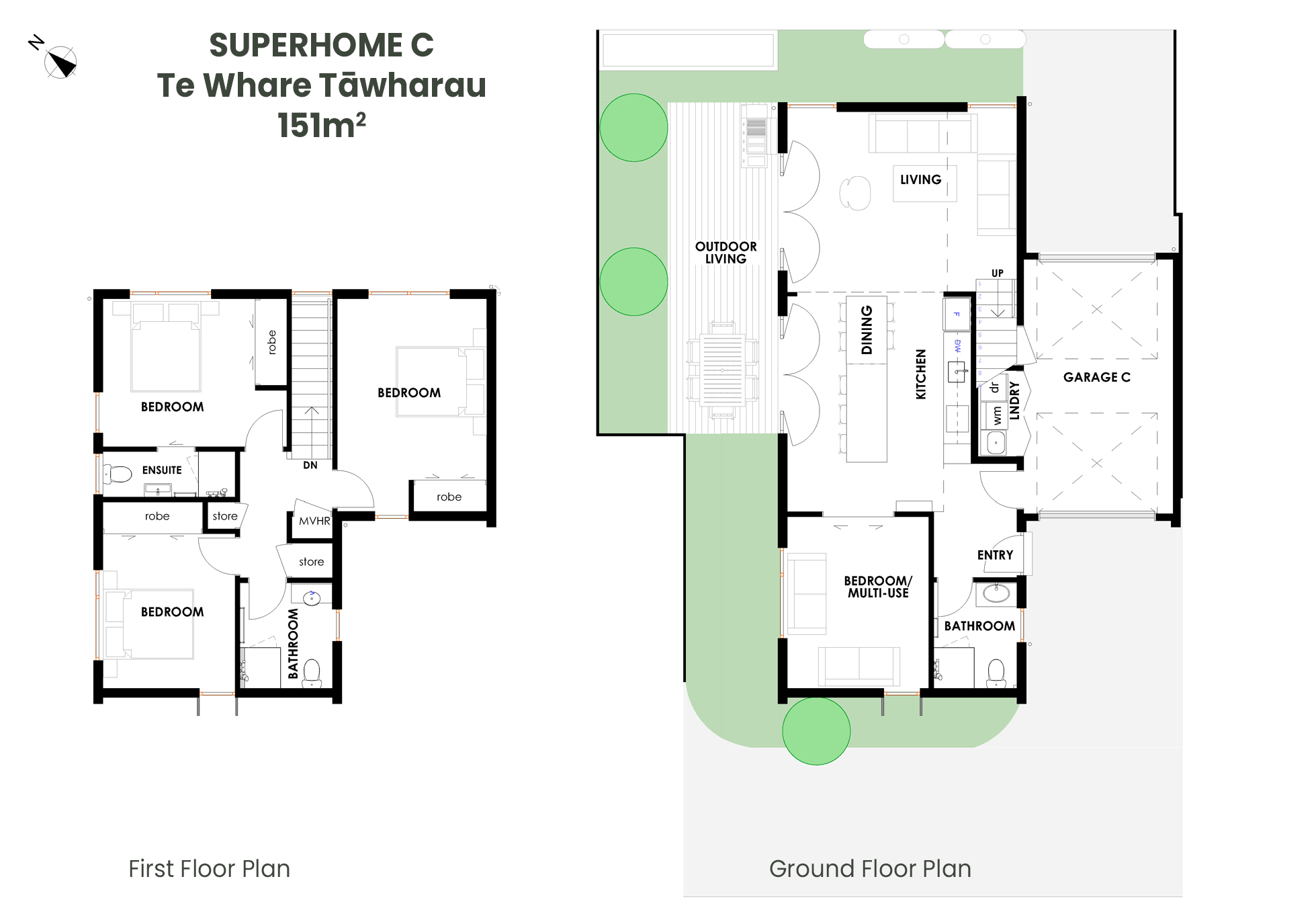
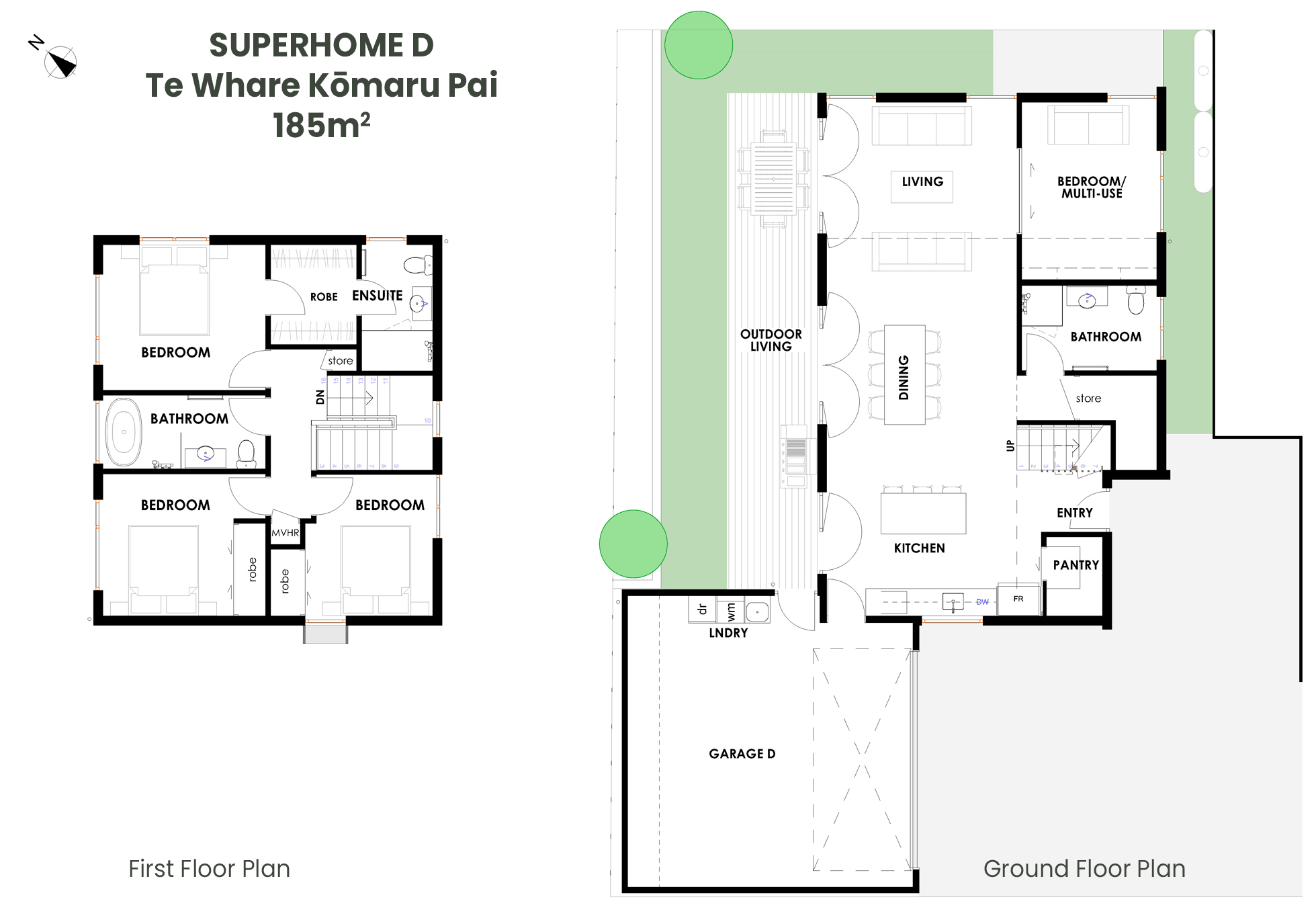

A Zero Carbon house addresses two issues:
Embodied Carbon (how much carbon is in the materials) and Operational Carbon (carbon produced by power/utilities used throughout the home's life).
Embodied carbon:
A material like concrete for example requires a lot of energy and releases a lot of heat to make, which releases carbon into the atmosphere, causing global warming etc. Timber, however, comes from trees which absorb carbon. So using timber for building helps sequester carbon, not release it.
There's a whole lot of different materials with different levels of carbon. Every material should have an EPD (environmental product declaration) to show this. (Like a box of cereal that has a nutritional label to show how much sugar etc it has). Not every single material we use can not have carbon in it, so we need to make sure that 'non-carbon' materials outweigh the 'carbon materials' to reach zero. Factors such as how much carbon is produced in transporting the materials to site can also come into play etc (although this is very small).
Operational carbon:
This is where Zero Energy comes into play. Relying on solar panels for example means you can power the lights etc without connecting to the grid, and making sure you use low-energy utilities. But we also need to make sure that the materials used in the house are durable and won't require regular replacements. Carpet, for example, may need to be replaced every decade or so, and so gets thrown away to landfill, and replaced by new carpet which contains more carbon. By this point, the house then would be responsible for the carbon in both the old carpet and new carpet.
